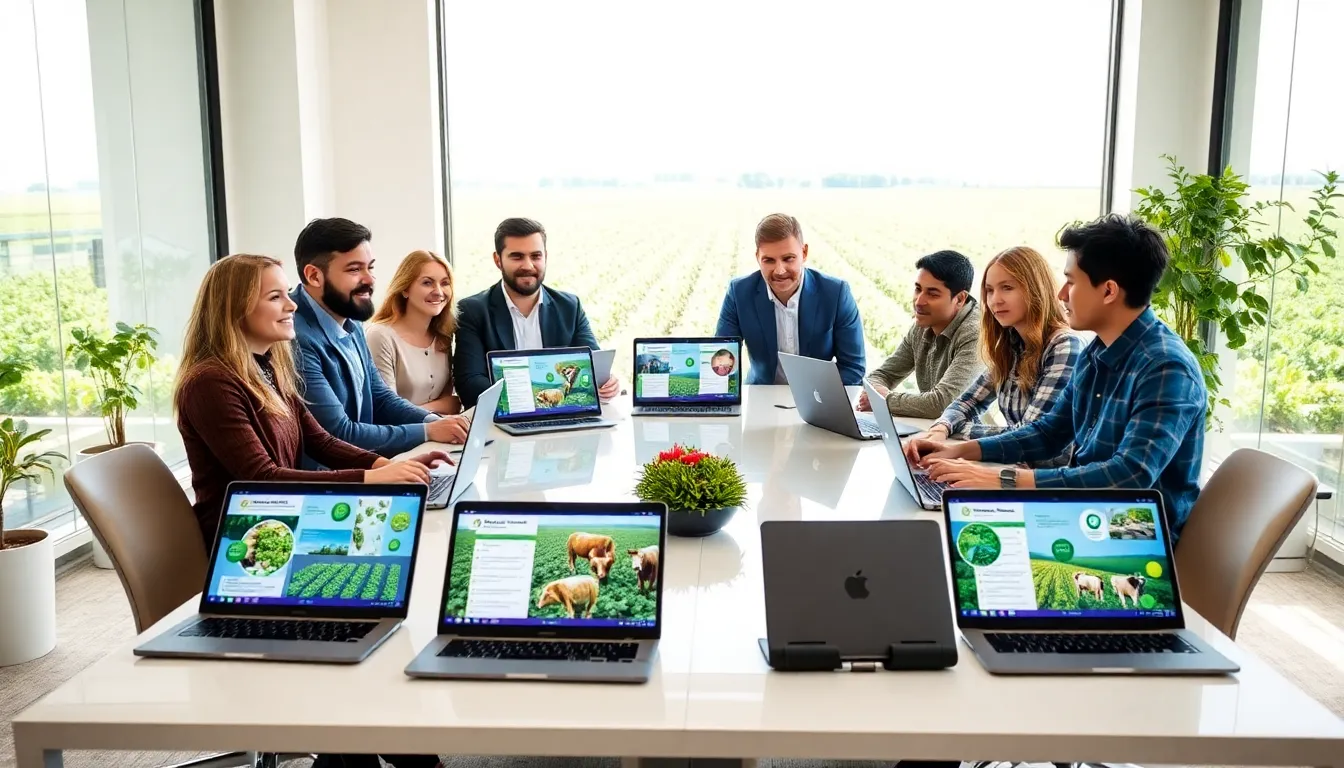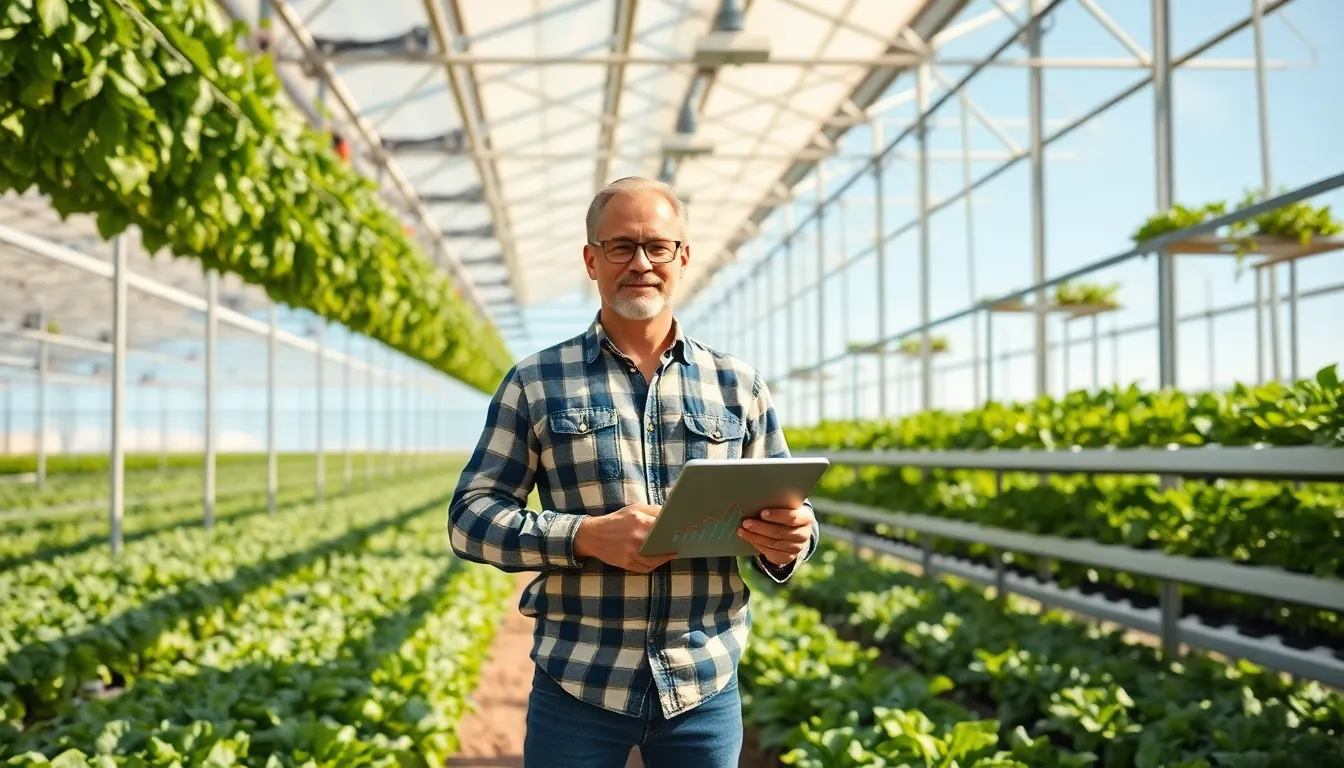Table of Contents
TogglePicture a world where farmers wield the power of technology to grow crops efficiently while saving the planet. Sounds like science fiction? Well, it’s happening now. Sustainable agriculture technology is not just a buzzword: it’s a vital solution in combating climate change and food scarcity. While some tech-savvy farmers may have started with apps to track crop progress, today’s advancements are reshaping the agricultural landscape. Let’s dig into the importance of sustainable practices, explore cutting-edge technologies, and envision a greener horizon.
The Importance of Sustainable Agriculture

Sustainable agriculture is essential in ensuring that the needs of the present are met without compromising future generations’ ability to meet their own needs. As the global population continues to rise, the strain on natural resources becomes increasingly apparent. Practices that prioritize sustainability seek to balance environmental health, economic profitability, and social equity.
To put it simply, sustainable agriculture aims to cultivate crops and livestock with minimal environmental impact while ensuring that resources are used judiciously. It relies on local conditions and protects biodiversity. By mitigating soil degradation, reducing water consumption, and combating pollution, sustainable agriculture technologies offer farmers a way to be part of the solution rather than the problem. As climate change continues to affect growing conditions worldwide, adopting these practices becomes not just important but imperative.
Key Technologies Driving Sustainable Practices
Precision Agriculture: Enhancing Efficiency and Reducing Waste
Precision agriculture employs technology to monitor and manage field variability in crops. By utilizing data analytics, GPS, and drones, farmers gain insight into soil conditions, crop health, and moisture levels. This approach allows them to apply water, fertilizers, and pesticides more accurately, which significantly reduces waste.
Imagine knowing the exact amount of water your crops need and delivering it precisely. Not only does this promote healthier plants, but it also minimizes environmental footprints. Farmers can increase yields while using fewer resources.
Vertical Farming: Maximizing Space and Resources
Vertical farming leverages technology to cultivate crops in stacked layers, often in controlled environments. It allows for the use of hydroponics and aeroponics systems. This method offers a solution for cities facing land scarcity.
By growing food in urban areas, vertical farming reduces transportation emissions and ensures fresh produce is available year-round. Who doesn’t want kale grown just down the street? Plus, it uses significantly less water than traditional farming.
Biotechnology: Improving Crop Resilience and Yield
Biotechnology is revolutionizing how food is cultivated. By genetically modifying crops, scientists can develop varieties that withstand pests, diseases, and climate extremes. This not only preserves yields but also decreases the need for chemical treatments.
So, farmers can grow stronger, more resilient crops even in challenging environmental conditions. This innovation paves the way for more reliable food supplies, crucial in a world facing unpredictable weather patterns.
Renewable Energy Innovations in Agriculture
Sustainable agriculture isn’t solely about growing crops efficiently: it’s also about the energy that powers these operations. As fossil fuel dependency wanes, renewable energy innovations are essential.
Solar panels are increasingly common on farms, allowing growers to harness the sun’s power to run irrigation systems, greenhouses, and machinery. Wind turbines are becoming another option for providing energy on-site, reducing reliance on external sources.
Biogas systems that convert organic waste into energy offer another sustainable solution. Farmers can use waste from livestock and crop residues to produce renewable energy while minimizing waste. This not only enhances cost-effectiveness but significantly reduces greenhouse gas emissions.
Challenges and Considerations in Implementing Technology
While the benefits of sustainable agriculture technology are immense, challenges persist in the implementation process. High initial costs can deter farmers from investing in sophisticated technologies. Many traditional farmers might be hesitant to adopt new methods due to the learning curve associated with these innovations.
Also, accessing reliable internet and technology infrastructure can be difficult in rural areas, limiting the effectiveness of data-driven solutions. Educating farmers on how to use these technologies is paramount for ensuring widespread adoption.
Cultural acceptance of new methods and technologies can also pose barriers. Change doesn’t happen overnight, and overcoming skepticism represents a hurdle for advocates of sustainable practices.
Future Trends in Sustainable Agriculture Technology
As technology continues to evolve, the future of sustainable agriculture looks promising. Advances in artificial intelligence and machine learning hold the potential to shape farming processes dramatically. Predictive analytics might help farmers make informed decisions based on real-time data about weather patterns and soil conditions.
Blockchain technology is also making inroads in agriculture by ensuring transparency in food supply chains. This could increase consumer trust and benefit farmers by providing them with the ability to trace their products’ origins.
Also, the integration of 3D printing in agriculture could enable the production of equipment and tools tailored to specific needs, lowering costs, and improving efficiency. As sustainability becomes an essential goal in agricultural practices, innovation will undoubtedly pave the way for a greener future.





